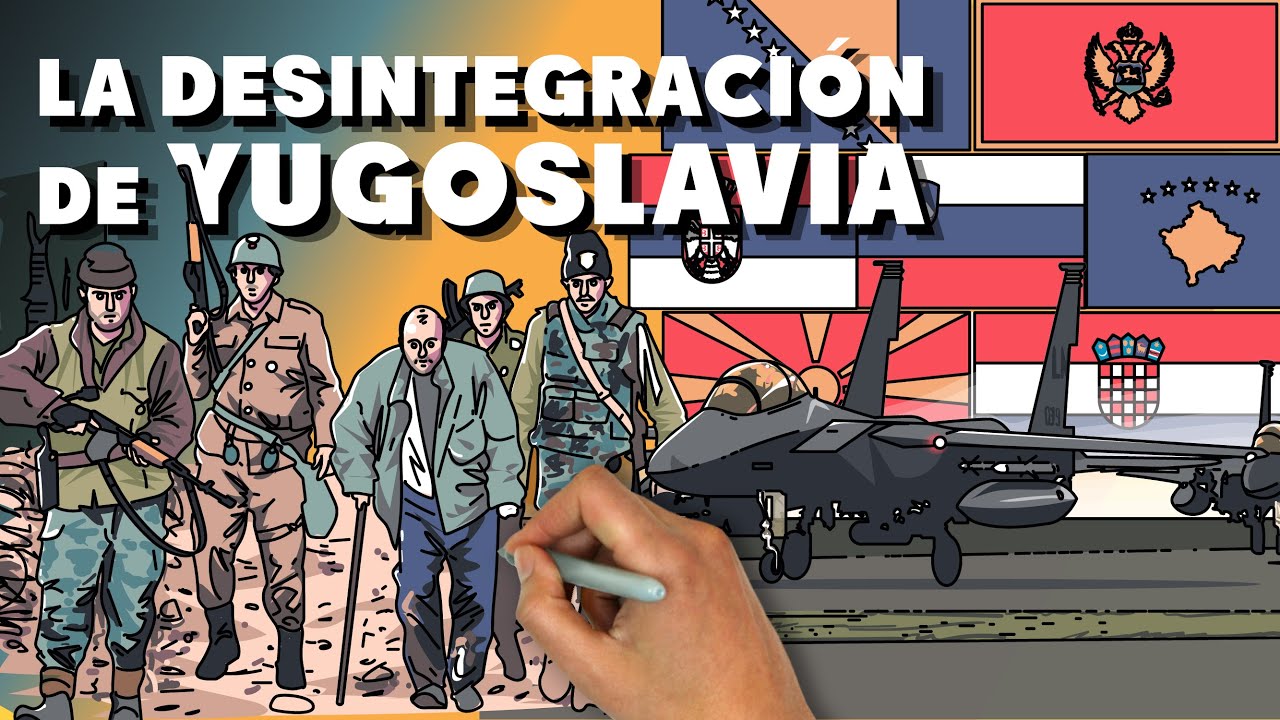Sejarah Yugoslavia dari Awal Berdiri Sampai Terpecah
Summary
TLDRThis video explores the complex history of Yugoslavia, from its formation in 1918 after the fall of the Austro-Hungarian Empire to its eventual disintegration in the 1990s. The script covers key events, including ethnic conflicts, the rise of nationalism, and the violent wars that led to the breakup of the country. It also highlights the role of key figures like Tito and Milosevic, as well as the devastating impact of war on the region. The video aims to provide viewers with a comprehensive understanding of Yugoslavia's turbulent history.
Takeaways
- 😀 Yugoslavia, located in Southeast Europe, was a significant country during the 20th century but has since fragmented into multiple nations.
- 😀 The country was initially formed after the Austro-Hungarian Empire dissolved in 1918, with Serbia playing a key role in its creation.
- 😀 Tensions arose early between Serbia, which favored a unified state, and Croatia, which sought a federal system.
- 😀 King Alexander of Yugoslavia responded to separatist movements by imposing a dictatorship and changing the country's name to Yugoslavia in 1929.
- 😀 Yugoslavia faced severe internal conflict during World War II, with parts of the country occupied by Axis powers and others collaborating with Nazi Germany.
- 😀 After WWII, Yugoslavia became a socialist republic under the leadership of Tito, who helped unite the country's diverse ethnic groups.
- 😀 Tito's death in 1980 marked the beginning of rising ethnic tensions, particularly in the 1980s, as economic crises and discrimination worsened relations.
- 😀 Nationalist movements gained traction in the late 1980s, with Slobodan Milošević promoting Serbian nationalism.
- 😀 The breakup of Yugoslavia began in the early 1990s, with Slovenia and Croatia declaring independence, leading to violent conflicts, particularly in Croatia and Bosnia.
- 😀 The Bosnian War, marked by ethnic violence and atrocities such as the Srebrenica massacre, was one of the most devastating aspects of Yugoslavia's collapse.
- 😀 Kosovo experienced rebellion and ethnic violence in the late 1990s, leading to NATO intervention and eventual international oversight of Kosovo's future.
Q & A
What was the primary reason behind the formation of Yugoslavia?
-Yugoslavia was formed after the dissolution of the Austro-Hungarian Empire in 1918, aiming to unite the South Slavic peoples of the Balkans into a single state.
What were the key differences between Serbia and Croatia regarding the structure of Yugoslavia?
-Serbia wanted a unitary state, while Croatia preferred a federation, leading to tensions between the two regions.
How did King Alexander react to the attempt by Croatians to break away in 1928?
-King Alexander responded by dissolving the parliament and instituting a dictatorship, changing the country's name to Yugoslavia in 1929.
What was the significance of the assassination of King Alexander in Paris?
-King Alexander's assassination in 1934 by a Croatian nationalist intensified the political instability in Yugoslavia, leading to increased ethnic tensions and divisions.
How did World War II affect Yugoslavia's political landscape?
-During WWII, Yugoslavia was invaded by Axis powers, and the country was divided. Ethnic groups within Yugoslavia aligned with different sides, further deepening internal divisions.
What was the role of the Partisans led by Tito in the liberation of Yugoslavia?
-The Partisans, led by Josip Broz Tito, were a communist resistance group that fought against Axis forces and later played a key role in liberating Yugoslavia in 1944.
How did Tito's death in 1980 contribute to Yugoslavia's eventual collapse?
-Tito's death led to the rise of ethnic tensions, as the system of collective leadership could not manage the growing political and economic challenges, contributing to Yugoslavia's eventual breakup.
What sparked the independence movements in Slovenia and Croatia in the early 1990s?
-Economic crisis, ethnic discrimination, and the rise of nationalist sentiment, particularly in Slovenia and Croatia, led these republics to declare independence from Yugoslavia in 1991.
What was the significance of the Bosnian War in the 1990s?
-The Bosnian War, which began in 1992, was marked by brutal ethnic violence, including the Srebrenica massacre in 1995, and ultimately led to the signing of the Dayton Accords to end the conflict.
How did Kosovo's situation evolve following the breakup of Yugoslavia?
-Kosovo faced significant unrest due to Albanian separatism, which led to NATO's intervention in 1999. Kosovo declared independence in 2008, though Serbia continues to contest it.
Outlines

This section is available to paid users only. Please upgrade to access this part.
Upgrade NowMindmap

This section is available to paid users only. Please upgrade to access this part.
Upgrade NowKeywords

This section is available to paid users only. Please upgrade to access this part.
Upgrade NowHighlights

This section is available to paid users only. Please upgrade to access this part.
Upgrade NowTranscripts

This section is available to paid users only. Please upgrade to access this part.
Upgrade Now5.0 / 5 (0 votes)





